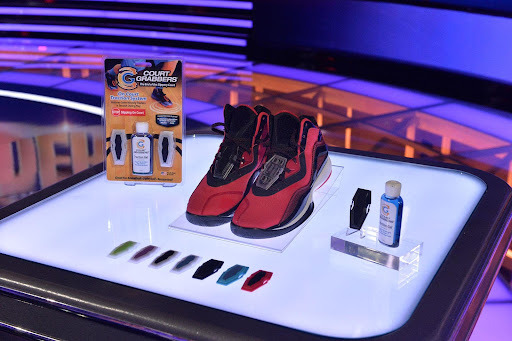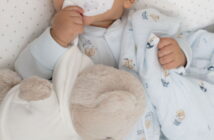By Kara Thompson,
Special to the AFRO
What is the solution for a jogger who runs at night and fears being hit by a passing car? What can help athletes who want to play on a basketball court without risking the injury of a bad slip and fall? Where do medical professionals, searching for an easier way to track their patients’ vitals, turn when they need fast, reliable information? The answer: technology.
Companies nowadays are working hard to bridge the gap between technology and the medical world, the fashion industry, and accident prevention efforts.
Technology is solving all types of challenges- both big and small. The integration of new technology into the way clothing items are made, and the wearable items themselves, have helped make life easier for those who use them.
One such company is Baltimore-based Harbor Designs and Manufacturing LLC. The business was founded in 2008 by Josh Barnes, who fell victim to the recession and was experiencing an unemployment spell at the time.
“We are a turn-key solution provider to companies and vendors, bringing new technologies to market. We do full-supply chain management, including in-house technical assembly and cleanroom assembly. Then, hopefully, we help you ideate on what your next product is and manage that as well,” said Barnes, when asked what Harbor Designs does.
The solutions provided by Barnes aren’t based on hypothetical situations.
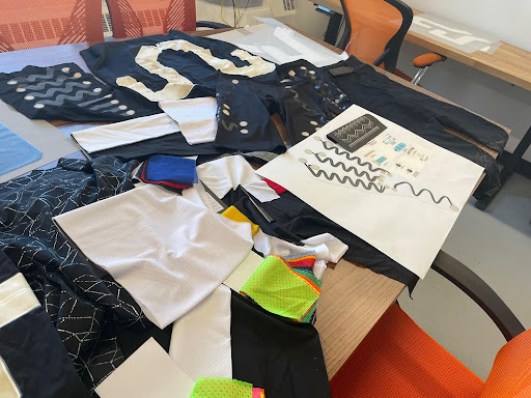 Harbor Designs and Manufacturing LLC are solving the issue of low visibility for night joggers with the application of washable LEDs to clothes. (Photo Courtesy of Josh Barnes)
Harbor Designs and Manufacturing LLC are solving the issue of low visibility for night joggers with the application of washable LEDs to clothes. (Photo Courtesy of Josh Barnes)
The solutions offered have helped troubleshoot a range of challenges that customers have faced in the real world. One client came to Harbor Designs after almost hitting a jogger on a dark road with low visibility. This trauma scared him into generating an idea of light-up running pants.
“He decided he was going to make joggers more visible,” said Barnes. “So we integrated stretch electronics, where you actually print the circuit onto the garment. We embedded [machine-washable] LEDs.”
An idea for a product that ensures shoes have enough traction on basketball courts manifested after a now-client watched his son play ball. The parent noticed that his son kept licking his hand and wiping it on the bottom of his shoe.
“What anybody who plays on any court knows is that the courts get dusty and slippery. You don’t have traction if you’re trying to make your shot in basketball, and kids are getting hurt too,” Barnes said.
The father came up with what he calls “traction gel,” a product that athletes can clip onto their shoes for easy access while playing. Harbor Designs named the invention “Court Grabbers.”
“We designed a little plastic carrier that gets laced into your shoelaces. And then there’s a shuttle that snaps into that plastic carrier, and in the shuttle is a little [traction pad]that you squirt some of this traction gel in,” Barnes said.“When you’ve got it laced into your shoelaces on both feet, you just wipe your right foot against your left foot and vice versa, and then both of the shoes now have traction on the bottom of them again.”
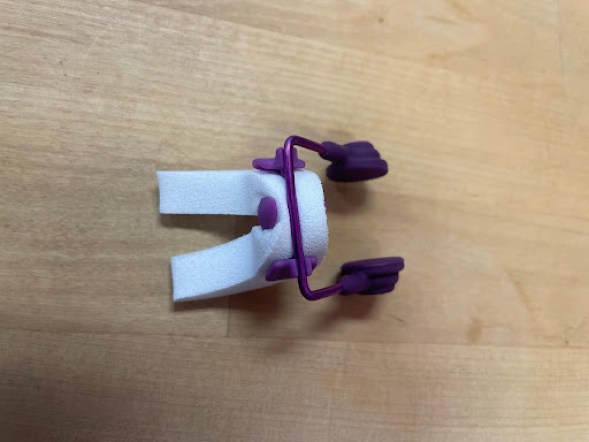 Nasa Clip, an invention that plays on the off-label use of tampons to stop nosebleeds, was invented by an ER doc and produced by Harbor Designs and Manufacturing LLC. (Photo Courtesy of Josh Barnes).
Nasa Clip, an invention that plays on the off-label use of tampons to stop nosebleeds, was invented by an ER doc and produced by Harbor Designs and Manufacturing LLC. (Photo Courtesy of Josh Barnes).
Besides wearable technology, Harbor Designs manufactures and produces a range of other products, from dispensers that add flavor to liquid medicines to manual blood transfusion pumps. The company is also partnering with a subscription game service to create a virtual at-home escape room.
“There’s no shortage of projects. There’s a lot of really cool tech being developed in Baltimore right now that I think [is]under advertised. People just don’t know what’s happening in our tech scene here,” said Barnes.
Designing and creating tech-integrated clothing is very different from designing things like transfusion pumps and dispensers due to the high potential for the wear and tear.
“The key to developing good wearables is to stay up on the latest technologies, because it is an ever evolving market,” said Barnes. “There are lots of sew shops around, but they’re very nuanced in what they do and what they’re good at.”
Most of Harbor Designs’ creations are ideas brought to them by small businesses and corporations to bring a product to life. They assist startups that come out of colleges in Maryland, like Johns Hopkins University, Morgan State University and the University of Maryland, as well as at large companies like Walmart or Home Depot.
A partnership with Fashions Unlimited, another Baltimore-based company, yielded the design of a shirt equipped with sensors throughout for medical professionals to track the person’s heart rate remotely.
“Our founder Philip [Spector], loves doing projects… that merge the gap between technology and fashion,” said Fashions Unlimited’s production manager Ebony Crear.
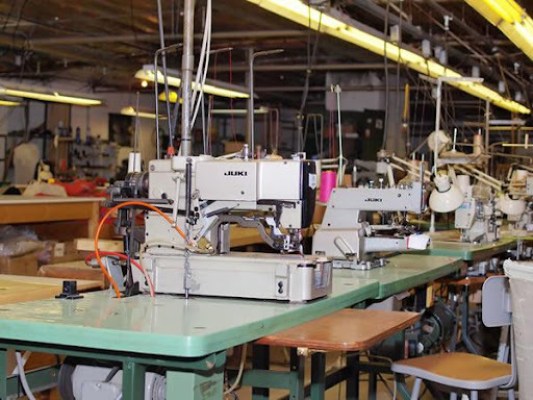 Machines used by Fashions Unlimited ensure precision in fabric cutting and maximize the use of materials. (Photo Courtesy of Ebony Crear).
Machines used by Fashions Unlimited ensure precision in fabric cutting and maximize the use of materials. (Photo Courtesy of Ebony Crear).
“In the last decade the apparel industry has seen a huge shift towards what they call Industry 4.0-related technologies, such as machinery, robotics and digital software to digital practices,” Crear said. “In general the whole process of manufacturing, from meeting a client to producing the garment is heading towards being all digitized.”
Crear says they’re actively upgrading the business’ technology to better design the garments and the machines they use to create them.
“One way they use technology during the production process is using 3D-rendering software to help their clients visualize potential final products.
“If we’re trying to help [a client]develop their pattern–let’s say they don’t have everything ready and they’re still tweaking some things– we can input all of the exact data points [into the software]and it provides a 3D image. We would even be able to print that out or fit it to an avatar.”
Crear said this tool can be especially helpful with global clients who are not able to come into the factory during production to check on their products.
“The process from taking an idea to making it practical, making it functionable, making it wearable is intense,” she said. “It’s all of these facets that I just feel like sometimes, as a designer, you might not have thought of.”
Harbor Designs and Fashions Unlimited are two homegrown, Black-owned businesses that have formed a strategic partnership to bring the fashion industry into the future. Using the integration of technology, manufacturing and production of apparel and accessories, the business are making sure that everyone can keep up with the changing times– from athletes to doctors and fashion designers.
Help us Continue to tell OUR Story and join the AFRO family as a member –subscribers are now members! Join here!
